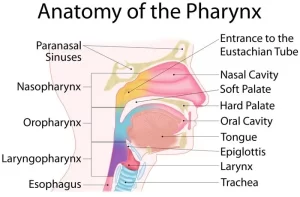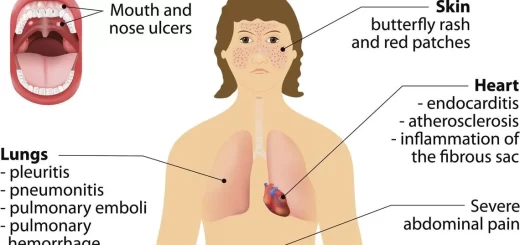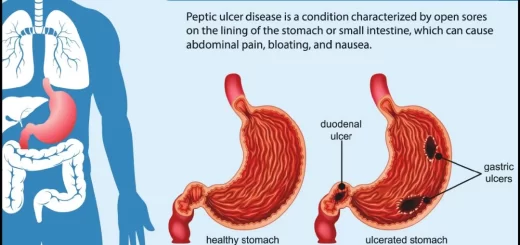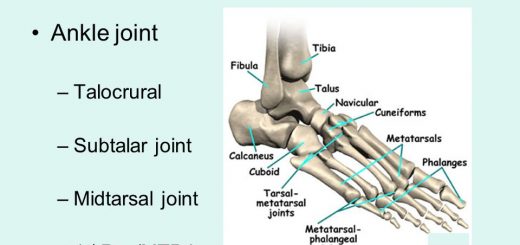Pharynx function, anatomy, location, muscles, structure and Esophagus parts
The pharynx is part of the respiratory system and digestive systems, The pharynx is the site of common illnesses, including sore throat and tonsillitis. The pharynx carries air to the respiratory system, It delivers food and liquid to the digestive system, It pushes food into the esophagus so it’s not breathed in, It equalizes the pressure in the ears and it drains fluid from the ears.
Pharynx
The pharynx is a musculo-membranous tube present posterior to the nose, mouth, and larynx. It extends from the base of the skull to the sixth cervical vertebra, where it joins the oesophagus, The wall of the pharynx is composed of:
- Lining mucous membrane.
- The inner fibrous coat (pharyngobasilar fascia) which is attached to the base of the skull superiorly.
- The muscles of the pharynx.
- The outer fibrous coat (buccopharyngeal fascia).
Muscles of the pharynx
1. Superiorconstrictormuscle:
2. Middle constrictor muscle.
3. Inferior constrictor muscle.
Nerve supply: pharyngeal plexus.
The action of constrictor muscles: During the process of swallowing contraction of the upper fibres of the superior constrictor will pull the pharyngeal wall forwards. This will aid the soft palate in the closure of the nasopharyngeal isthmus (between the nasopharynx and oropharynx). The successive contractions of the superior, middle, and inferior constrictor muscles propel the bolus of downwards to the oesophagus.
4. Stylopharyngeus muscle:
Nerve supply: Glossopharyngeal nerve
Action: Elevation of the larynx and the pharynx during swallowing.
5. Salpingopharyngeus muscle:
Nerve supply: Pharyngeal plexus.
Action: It assists in the elevation of the pharynx.
6. Palatopharyngeus muscle:
It has been discussed with the palate.
The interior of the pharynx
The pharynx is divided into three parts:
- Nasopharynx
- Oropharynx
- Laryngopharynx
I. Nasopharynx
It extends from the base of the skull to the upper surface of the soft palate (at the level of C 1. It contains the following structures:
- Pharyngeal opening of the auditory tube (Eustachian or pharyngotympanic): It lies in the lateral wall of the nasopharynx. The auditory tube connects the nasopharynx with the cavity of the middle ear to equalize the pressure on both sides of the eardrum.
- Tubal elevation: It is an elevation above and behind the pharyngeal opening of the auditory tube, It is formed by the following: Mucosa covering the cartilaginous end of the auditory tube.
- Tubal tonsil (lymphoid tissue).
- Salpingo-pharyngeal fold: It is a longitudinal fold extending from the tubal elevation toward the pharynx, It is produced by the salpingo-pharyngeus muscle covered by mucous membranes.
- Salpingo-palatine fold: It is a horizontal fold extending from the tubal elevation toward the palate.
- Pharyngeal recess (fossa of Rosen Müller): It is a depression behind the tubal elevation, It overlies the internal carotid artery).
- Pharyngeal tonsil: It is a collection of a lymphoid tissue on the posterior wall of the pharynx near its roof, If enlarged it is called the adenoids.
II. Oropharynx
It extends from the lower surface of the soft palate to the upper border of the epiglottis, It communicates anteriorly with the oral cavity through an opening called the oropharyngeal isthmus made by the palatoglossal arch on each side (each arch is made by palatoglossus muscle covered by mucous membrane).
It also contains the palatopharyngeal arch (made by palatopharyngeus muscle covered by mucous membrane), Between the palatoglossal and palatopharyngeal arches, there is the palatine tonsil, Vallecula is the depression between the median and lateral glosso-epiglottic folds, It is supplied by the internal laryngeal nerve.
Palatine tonsils
They are two masses of lymphoid tissue in the lateral wall of the oropharynx. They are covered with mucous membrane. Its medial surface projects into the lumen of the oropharynx. Its surface is pitted by numerous small openings which lead into the tonsillar crypts. The upper part of the medial surface has a deep intratonsillar cleft. It is covered on its lateral surface by a capsule.
Arterial supply of the tonsil
- Tonsillar artery (from a facial artery), which pierces the superior constrictor muscle.
- Ascending palatine artery (from a facial artery).
- Lingual artery (from an external carotid artery).
- Ascending pharyngeal artery (from an external carotid artery).
- Twigs from a greater palatine artery (from maxillary).
Venous drainage: Paratonsillar vein
Nerve supply of the tonsils:
- Glossopharyngeal nerve.
- Lesser palatine nerve.
The glossopharyngeal nerve supplies the middle ear so the pain of tonsillitis refers to the ear.
Lymphatic drainage of the tonsil: Deep cervical lymph nodes (mainly the jugulo-digastric nodes).
III. Laryngopharynx
It extends from the upper border of the epiglottis to the level of the cricoid cartilage (Level of C. 6) where it continues as the oesophagus, Its upper part lies behind the inlet of the larynx.
Piriform fossa
The Piriform fossa is a depression on each side of the inlet of the larynx, It has the following boundaries:
- Medial: Aryepiglottic fold of the larynx.
- Lateral: Thyrohyoid membrane above and the lamina of the thyroid cartilage below.
The nerve supply of the mucous membrane of the piriform fossa is the internal laryngeal nerve.
Gaps of the pharynx
1. A gap laterally between the superior and middle constrictors, It gives passage to the following:
- Stylopharyngeus passing down to the pharynx.
- The glossopharyngeal nerve passes forwards to the tongue.
- Stylohyoid ligament.
2. A gap laterally between the middle and inferior constrictors, This gap is closed by the thyrohyoid membrane, The structures passing through this gap are:
- The internal laryngeal nerve.
- Superior laryngeal artery.
3. A gap at the lower border of the inferior constrictor, It is pierced by:
- Inferior laryngeal artery.
- The recurrent laryngeal nerve.
Nerve supply of the pharynx
Pharynx is supplied mainly by the pharyngeal plexus which is composed of:
- glossopharyngeal nerve.
- The pharyngeal branch of the vagus nerve (carrying fibres of the cranial accessory nerve).
- Branches of the superior cervical sympathetic ganglion.
Motor nerve supply
Through the pharyngeal plexus (by cranial part of the accessory nerve) except the stylopharyngeas muscle which is supplied by the glossopharyngeal nerve.
Sensory nerve supply
- Mucous membrane of the nasopharynx is supplied by the Maxillary nerve.
- Mucous membrane of the oropharynx is supplied by the Glossopharyngeal nerve.
- Mucous membrane of the laryngopharynx is supplied by the internal laryngeal branch of the vagus nerve.
Arterial supply of the pharynx
- Ascending pharyngeal artery.
- Ascending palatine artery and tonsillar from facial.
- Maxillary and lingual arteries.
Venous drainage of the pharynx
It is drained by the pharyngeal plexus of veins which drains into the internal jugular vein.
Lymphatic drainage of the pharynx
- Deep cervical lymph nodes.
- Retropharyngeal lymph nodes.
- Paratracheal lymph nodes.
Esophagus
The esophagus is a long muscular tube about 10 inches long that extends through the neck, thorax, and abdomen. It begins as a lower continuation of the pharynx and ends at the cardiac end of the stomach.
Parts
1. Cervical part: It begins opposite the lower border of the cricoid cartilage, at the level of the 6th cervical vertebra. The cervical part of the esophagus lies between the trachea anteriorly and the vertebral column and prevertebral muscles posteriorly, The recurrent laryngeal nerve lies in the groove between the trachea and esophagus on each side.
2. Thoracic part: It is the longest and the main part of the esophagus, It lies in the superior and posterior mediastina, It has a slightly sinuous course, In the superior mediastinum, It lies between the trachea anteriorly and the vertebral column and prevertebral muscles posteriorly.
The left recurrent laryngeal nerve lies in the groove between the trachea and esophagus on the left side, The azygos vein lies close to the right side of the esophagus while the thoracic duct lies close to its left side, In the posterior mediastinum, the esophagus is surrounded by esophageal plexus of nerves (derived from both vagi).
3. Abdominal part: It is the shortest of all parts, It enters the abdomen through an opening in the right crus of the diaphragm at the level of T10, After a course of about 1/2 inch (1.25 cm), it enters the stomach on its right side, It is covered on its anterior and lateral surfaces by the peritoneum, The left and right vagi lie on its anterior and posterior surfaces, respectively.
Sites of esophageal constriction
- At the beginning; pharyngeo-esophageal junction.
- At the site where the left bronchus cross in front of it.
- As crossed by the arch of the aorta.
- At its termination (at the gastro-esophageal junction).
Blood supply
- Cervical part: Inferior thyroid artery and vein.
- Thoracic part: Bronchial arteries and descending thoracic aorta. Its venous drainage is by Azygos and hemiazygos veins.
- Abdominal part: Left gastric artery and Left gastric vein.
- The lower end of the esophagus is a site of portosystemic anastomosis so vulnerable to esophageal varices in case of portal hypertension as in Bilharzial hepatic fibrosis or liver cirrhosis.
You can download Science online application on Google Play from this link: Science online Apps on Google Play
Git function, Types of salivary secretion and Composition of saliva
Histological structure of salivary glands, Parotids, Sublingual and Submandibular glands
Norma lateralis features & anatomy, Mandible surfaces, nerves & ligaments
Salivary glands function, shape, lobes, surfaces and Structures within the parotid gland
Mouth Cavity divisions, anatomy, function, muscles, Contents of Soft palate and Hard palate
Tongue function, anatomy & structure, Types of lingual papillae & Types of cells in taste bud




